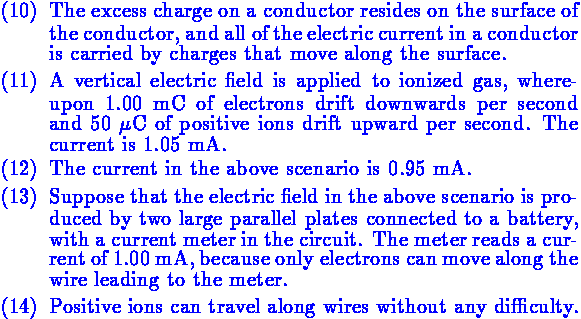


(10) FALSE
As we learned in the context of Gauss' law, any excess ELECTROSTATIC
charge on a conductor must reside on its surface. Once we are dealing
with a situation of moving charges (non-zero currents), then our previous
argument no longer applies, and excess charge can be found throughout the
volume of a conductor.
(11 & 12) TRUE, FALSE
Positive charge moving up and negative charge moving down BOTH make
the same-sign contribution to i = dq/dt.
(13 & 14) Both FALSE
An ionized gas or the electrolyte in a battery can have currents of
positive or negative ions of various types. In contrast, the only
way in which a conducting wire can carry an electric current is for
electrons to move along it. When positive ions reach the top plate
in the ionized gas scenario, they neutralize by acquiring electrons
from the plate. The electrons which move along the wire to replace
the neutralizing electrons are essentially the continuation of the
current carried by the positive ions.